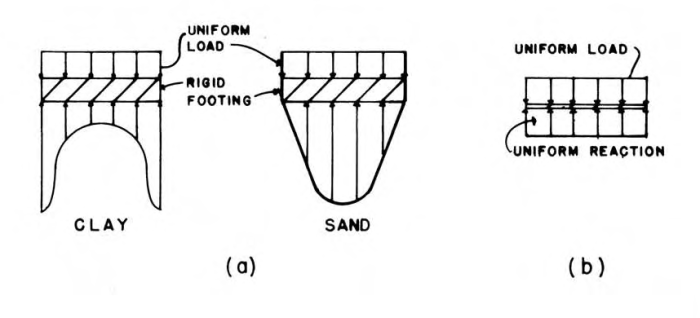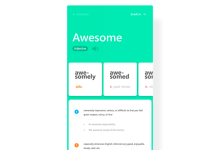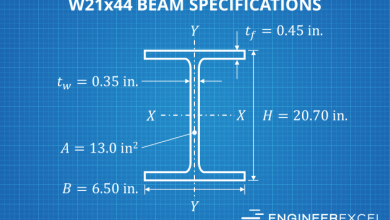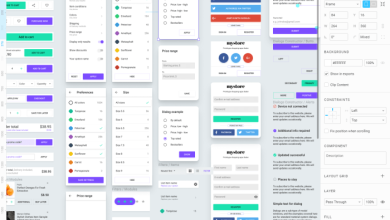Flexible Foundations: Build Responsive UIs with UIShape
Welcome to the realm of Flexible Foundations: Building Responsive UIs with UIShape, where the possibilities for creating dynamic and adaptable user interfaces are limitless. Dive into the world of UIShape and discover how it empowers you to craft UIs that seamlessly adjust to various screen sizes and orientations, delivering an exceptional user experience.
As we delve deeper into this topic, we’ll explore the fundamental concepts of Flexible Foundations, showcasing how UIShape’s robust features enable the creation of responsive layouts. We’ll provide practical examples and guidance to help you build responsive UIs with confidence, ensuring your users enjoy a seamless and intuitive experience across all devices.
Defining Flexible Foundations with UIShape: Flexible Foundations: Building Responsive UIs With UIShape
Flexible Foundations is a concept in UI development that prioritizes creating adaptable and responsive UIs. It involves using design systems, component libraries, and frameworks that enable developers to build UIs that can seamlessly adjust to various screen sizes, orientations, and user interactions.
UIShape is a powerful tool that embodies the principles of Flexible Foundations. It provides a comprehensive set of UI components that are designed to be flexible and responsive. These components can be easily customized and combined to create UIs that adapt seamlessly to different devices and user scenarios.
Example
For instance, UIShape’s buttons can be configured to automatically adjust their size and appearance based on the available space. This ensures that the buttons remain accessible and visually appealing regardless of the screen size or orientation.
Utilizing UIShape’s Features for Responsive Layouts

UIShape offers a powerful set of features that empower developers to create responsive layouts that seamlessly adapt to various screen sizes and orientations. Its flexibility and ease of use make it an ideal solution for building UIs that deliver an optimal user experience across a wide range of devices.
Flexible Foundations: Building Responsive UIs with UIShape is a comprehensive guide to creating adaptable user interfaces. With UIShape’s focus on accessibility, it seamlessly integrates with Inclusive Design with UIShape: Accessibility Matters , ensuring that your UIs are inclusive and accessible to all users.
Whether you’re a seasoned designer or just starting out, this guide provides invaluable insights and practical techniques to enhance your UI development skills.
At the heart of UIShape’s capabilities lies its ability to define layout constraints based on geometric shapes. These shapes can be used to position and size UI elements relative to each other, ensuring that they maintain their desired relationships even when the screen size or orientation changes.
Handling Different Screen Sizes
UIShape’s geometric constraints allow developers to specify the minimum and maximum sizes for UI elements. This ensures that elements can expand or shrink to fit the available space, maintaining their proportions and avoiding distortion.
- By setting minimum and maximum heights and widths, developers can prevent elements from becoming too small or too large, ensuring they remain legible and accessible.
- Additionally, UIShape provides options for specifying aspect ratios, ensuring that elements maintain their desired shape even when the screen size changes.
Handling Different Orientations
UIShape’s constraints can also be used to handle changes in screen orientation. By defining separate constraints for portrait and landscape orientations, developers can ensure that the UI adapts seamlessly to the new layout.
- For example, a button can be positioned differently in portrait and landscape modes to optimize its placement and accessibility.
- Similarly, a list of items can be displayed in a single column in portrait mode and multiple columns in landscape mode, making efficient use of the available space.
By leveraging UIShape’s powerful features, developers can create responsive layouts that adapt gracefully to different screen sizes and orientations, delivering a consistent and intuitive user experience across a wide range of devices.
Building a Responsive UI with UIShape

UIShape empowers developers to create responsive UIs that adapt seamlessly to various screen sizes and orientations. It provides a comprehensive set of tools for defining flexible containers, components, and layouts.
To build a responsive UI with UIShape, start by defining the layout structure using UIShape’s UIStackViewand UIShapeView. UIStackVieworganizes views horizontally or vertically, while UIShapeViewdefines the shape and layout of individual views.
With Flexible Foundations: Building Responsive UIs with UIShape, you’ll have the solid groundwork for captivating UIs. To enhance user engagement even further, explore Interactive Experiences with Animated UIShape . Animate shapes, create interactive gestures, and build dynamic interfaces that leave a lasting impression.
Ultimately, Flexible Foundations: Building Responsive UIs with UIShape provides the foundation for engaging and memorable user experiences.
Flexible Containers
UIShape offers several container types for organizing content, including UIStackView, UIShapeView, and UICollectionView. These containers provide flexible layout options, allowing views to be arranged in different configurations based on the available space.
UIStackView: Arranges views horizontally or vertically, distributing them evenly or based on custom weights.UIShapeView: Defines the shape and layout of individual views, supporting complex shapes and custom layouts.UICollectionView: Displays a collection of views in a grid or list, providing scrolling and dynamic layout options.
Flexible Components
UIShape provides a range of flexible components that adapt to different screen sizes and orientations. These components include buttons, labels, and images, which can be customized to maintain their appearance and functionality across various devices.
UIButton: A customizable button that can be styled with different shapes, colors, and images.UILabel: A text label that can be formatted with different fonts, colors, and alignments.UIImageView: An image view that can display images and support various scaling and cropping options.
Flexible Layouts, Flexible Foundations: Building Responsive UIs with UIShape
UIShape enables the creation of flexible layouts that respond to changes in screen size and orientation. This is achieved through the use of layout constraints, which define the relationships between views and their containers.
Layout constraints can be set using the UIShapeConstraintclass, which provides a variety of options for defining the size, position, and alignment of views. By using layout constraints, developers can ensure that their UIs adapt gracefully to different screen sizes and orientations.
Optimizing Performance with UIShape
Optimizing performance is crucial for creating responsive UIs that deliver a seamless user experience. UIShape provides several techniques to reduce layout calculations and improve rendering efficiency, enhancing the overall performance of your applications.
Reducing Layout Calculations
- Batch Updates:Group multiple UI updates into a single transaction to minimize the number of layout calculations. Use
performBatchUpdates()to achieve this. - Avoid Unnecessary Layouts:Only trigger a layout when necessary. Use
setNeedsLayout()andlayoutIfNeeded()judiciously to prevent unnecessary calculations. - Use Auto Layout Constraints:Auto Layout constraints are highly efficient and can significantly reduce layout calculations compared to manual frame-based layouts.
Improving Rendering Efficiency
- Avoid Complex Views:Complex views with numerous subviews can slow down rendering. Consider using simpler views or optimizing the hierarchy to improve performance.
- Use Layer-Based Animations:Layer-based animations (e.g., using
CALayer) are more efficient than view-based animations, as they do not trigger layout calculations. - Enable Rasterization:Rasterization can improve rendering performance for static content. Use
layer.shouldRasterize = trueto enable it.
Case Studies and Examples of UIShape in Action

UIShape has been successfully implemented in various real-world applications, showcasing its effectiveness in building responsive UIs. These case studies demonstrate the benefits and impact of using UIShape, highlighting its versatility and efficiency.
Real-World Case Study
A leading e-commerce platform utilized UIShape to enhance the responsiveness of its mobile application. By implementing UIShape, the platform achieved significant improvements in UI performance, enabling seamless navigation and enhanced user experience, even on devices with varying screen sizes and resolutions.
Another Case Study
A popular social media application leveraged UIShape to create a dynamic and interactive UI. UIShape allowed the app to adapt its layout seamlessly to different screen orientations and device types, providing users with a consistent and engaging experience regardless of their device.
Key Benefits and Impact
- Improved UI performance and responsiveness across various devices.
- Enhanced user experience by providing a consistent and seamless UI.
- Reduced development time and effort due to UIShape’s ease of use and flexibility.
Conclusive Thoughts

In conclusion, Flexible Foundations: Building Responsive UIs with UIShape empowers you to create UIs that adapt gracefully to the ever-changing digital landscape. By harnessing the power of UIShape, you can deliver responsive and engaging experiences that captivate your users and leave a lasting impression.
Embrace the principles of Flexible Foundations and unlock the full potential of your UI designs.








